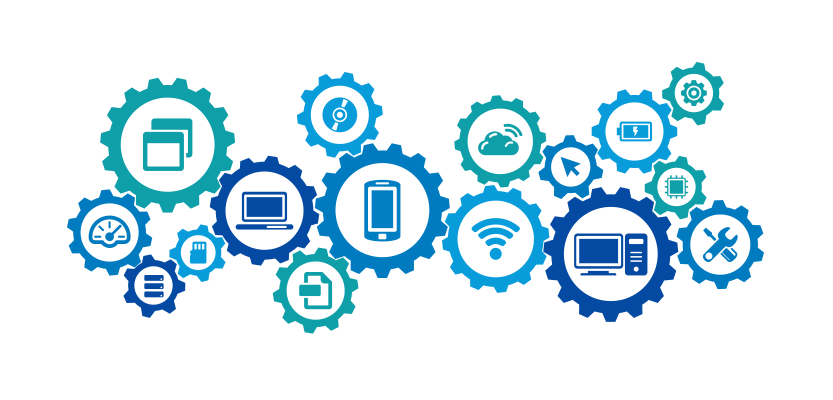7 Best Practices for Successful System Integration Projects
Are you looking for ways to improve your system integration projects? Whether you are a beginner or an expert in system integration, you will find some useful tips and insights in this article. In this article, we will share with you seven best practices for system integration projects that can help you achieve your goals and avoid common pitfalls. But first, let’s understand what system integration is and why it matters.
What is system integration?

System integration is the process of merging different parts of a system into one that works as a unit. The aim is to link individual components and make sure they cooperate well. For an organization, system integration is more than just joining together internal systems. It also includes joining external or third party systems that the organization also uses. This could be third party business tools, partner systems, or industry or government systems depending on the kind of industry you operate in. There are different ways you can integrate your systems, and different kinds of integration. Let’s see these next.
Types of system integration
There are different types of system integration that you can use depending on your needs and preferences. Some of the common types of system integration are:
- Point-to-point integration: This is the simplest type of integration, where two systems are directly connected and communicate with each other. This type of integration is easy to implement and maintain, but it can become complex and inefficient when the number of systems increases.
- Hub-and-spoke integration: This is a type of integration where a central system acts as a hub that connects and coordinates multiple systems that act as spokes. This type of integration reduces the complexity and redundancy of point-to-point integration, but it can create a single point of failure and a performance bottleneck.
- Bus integration: This is a type of integration where a common communication channel or a bus connects and mediates multiple systems. This type of integration eliminates the need for a central system and allows for more flexibility and scalability, but it can require more standardization and governance.
- Hybrid integration: This is a type of integration that combines different types of integration to achieve the best results. This type of integration allows for more customization and optimization, but it can also increase the cost and complexity.
Now that you have a basic understanding of what system integration is and what types of integration are available, let’s move on to the best practices that can help you succeed in your system integration projects.
1. Create an integration strategy
The first step to a successful system integration project is to create a clear and comprehensive integration strategy. An integration strategy should outline the following aspects:
- The goals and objectives of the integration project
- The integration monitoring and maintenance plans
- The integration method and approach
- The integration architecture and design
- The integration team and roles
- The integration timeline and budget
- The integration risks and mitigation plans
- The integration testing and validation procedures
- The integration monitoring and maintenance plans
Creating an integration strategy can help you align your vision and expectations, define your deliverables and milestones, identify your resources and constraints, and plan your actions and contingencies.
2. Gather consistent documentation
The second best practice for system integration projects is to gather consistent and accurate documentation for all the systems involved in the integration. Documentation can include the following types of information:
- The system specifications and functionalities
- The system interfaces and protocols
- The system data models and formats
- The system dependencies and interactions
- The system performance and reliability
- The system security and compliance
Gathering consistent documentation can help you understand the characteristics and capabilities of each system, map the data and processes between the systems, design the integration logic and flow, and troubleshoot and resolve any problems that may appear during the integration.
3. Use uniform data formats
The third best practice for system integration projects is to use uniform and standardized data formats for data exchange between the systems. Data formats can include the following aspects:
- The data structure and schema
- The data type and format
- The data encoding and decoding
- The data validation and verification
- The data transformation and conversion
Using uniform data formats can help you ensure the data quality and integrity, reduce the data errors and inconsistencies, simplify the data integration and manipulation, and improve the data interoperability and compatibility.
4. Test thoroughly
The fourth best practice for system integration projects is to test the integration thoroughly and rigorously. Testing can include the following types and levels:
- Unit testing: testing the individual components or modules of the system
- Integration testing: testing the interactions and interfaces between the components or modules of the system
- System testing: testing the functionality and performance of the system as a whole
- User acceptance testing: testing the usability and satisfaction of the system by the end-users
- Regression testing: testing the impact and effect of the integration on the existing systems and functionalities
Testing thoroughly can help you verify the functionality and performance of the integration, identify and fix any bugs or defects, ensure the quality and reliability of the integration, and validate the user requirements and expectations.
5. Monitor and maintain
The fifth best practice for system integration projects is to monitor and maintain the integration continuously and proactively. Monitoring and maintenance can include the following activities:
- Collecting and analyzing the integration data and metrics
- Tracking and reporting the integration status and performance
- Detecting and alerting the integration errors and failures
- Diagnosing and repairing the integration faults and incidents
- Updating and upgrading the integration components and functionalities
- Optimizing and improving the integration efficiency and effectiveness
Monitoring and maintaining the integration can help you ensure the availability and stability of the integration, prevent and mitigate the integration risks and problems, enhance the integration functionality and performance, and support the integration scalability and adaptability.
6. Communicate and collaborate
The sixth best practice for system integration projects is to communicate and collaborate effectively and efficiently with all the stakeholders involved in the integration. Stakeholders can include the following groups:
- The integration team: the people who are responsible for planning, designing, developing, testing, deploying, and managing the integration
- The system owners: the people who own and operate the systems that are integrated
- The system users: the people who use and benefit from the systems that are integrated
- The system vendors: the people who provide and support the systems that are integrated
Communicating and collaborating with the stakeholders can help you establish and maintain a common understanding and agreement, coordinate and synchronize your actions and efforts, share and exchange your information and feedback, and resolve and avoid any conflicts and misunderstandings.
7. Learn and improve
The seventh and final best practice for system integration projects is to learn and improve continuously and iteratively from the integration experience and outcome. Learning and improving can include the following steps:
- Reviewing and evaluating the integration process and result
- Measuring and assessing the integration performance and impact
- Identifying and documenting the integration lessons and best practices
- Recognizing and celebrating the integration achievements and successes
- Implementing and applying the integration improvements and recommendations
- Revisiting and revising the integration strategy and plan
Learning and improving from the integration can help you capture and leverage the integration knowledge and insights, acknowledge and appreciate the integration efforts and contributions, enhance and sustain the integration quality and value, and prepare and plan for the future integration opportunities and challenges.
Conclusion
System integration is a vital process that can help you achieve your business goals and overcome your challenges. By following the seven best practices we discussed in this article, you can ensure a smooth and successful system integration project that delivers quality and value. However, system integration is not a one-time task. It requires continuous monitoring, maintenance, and improvement to keep up with the changing needs and demands of your business and customers. That’s why you need a reliable and professional partner who can help you with your system integration needs.
OnextDigital is a leading company that offers mobile app development, UX/UI design, and white label software services. We have a team of experienced and skilled system integrators who can help you with any system integration challenge. Whether you need to integrate your existing systems, or build a new system from scratch, we can help you with our customized and cost-effective solutions. Contact us today and let us help you transform your business with system integration.




